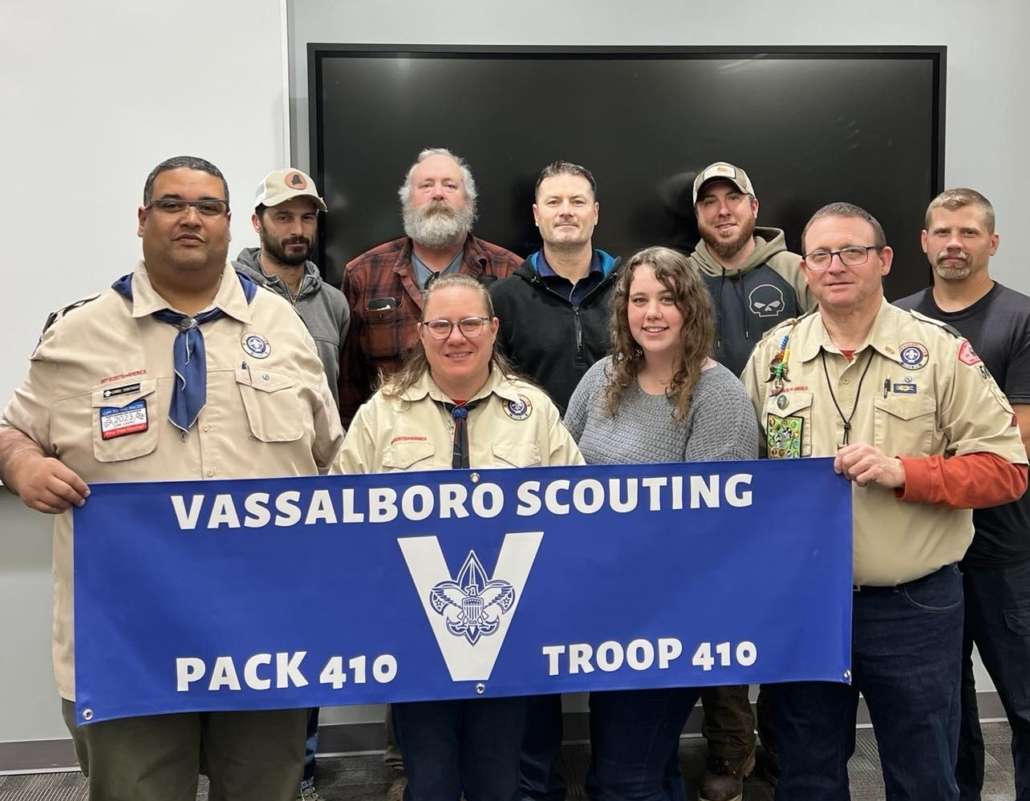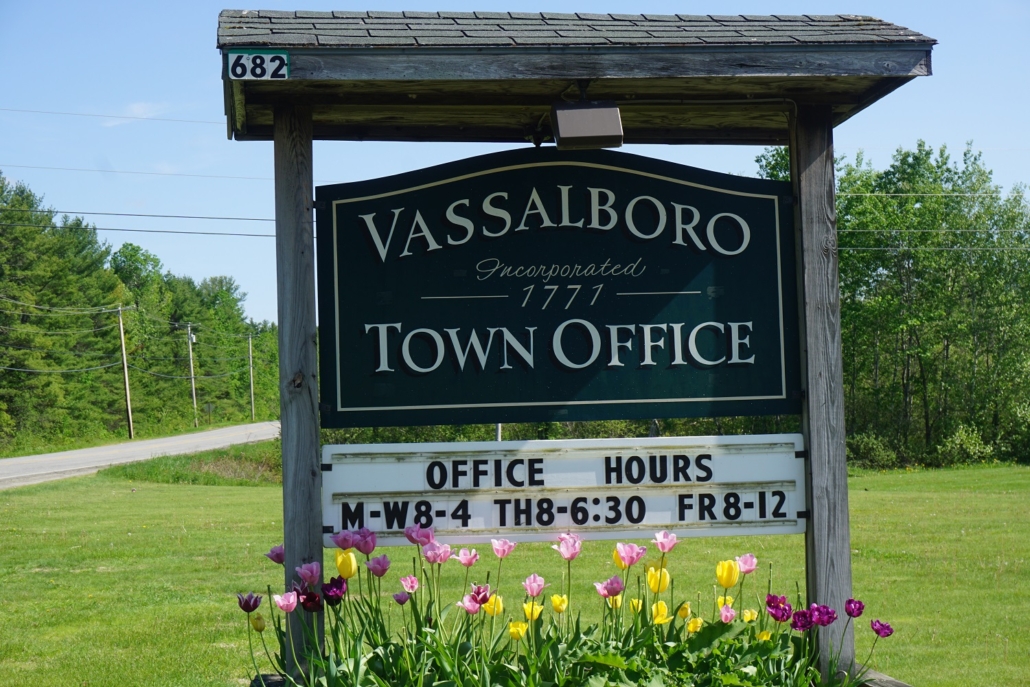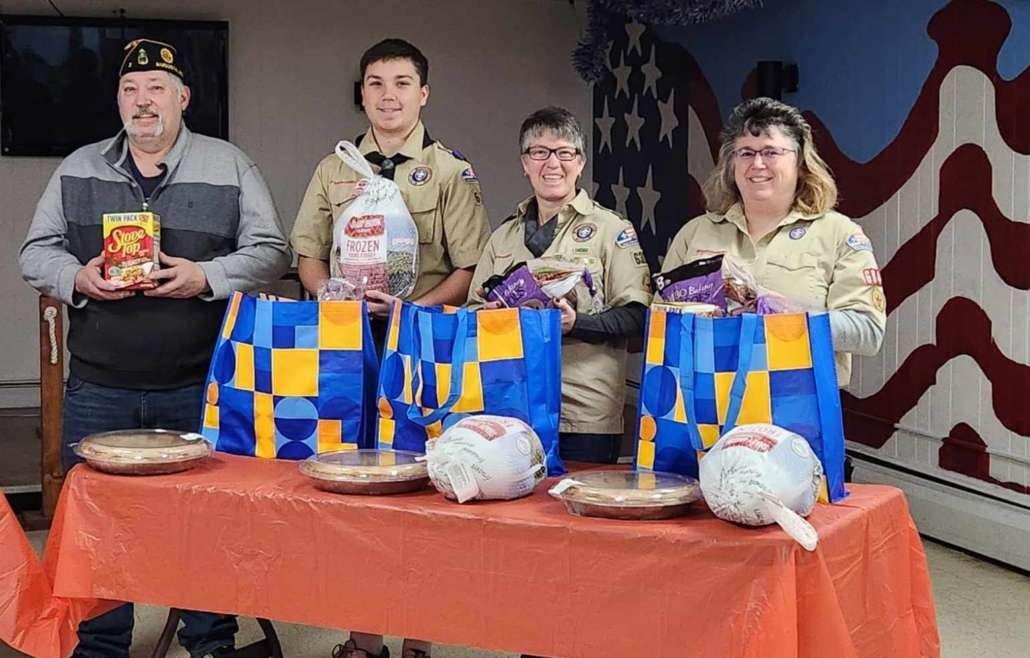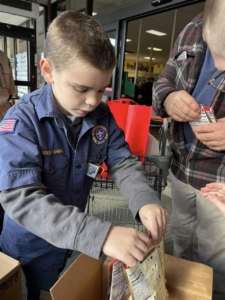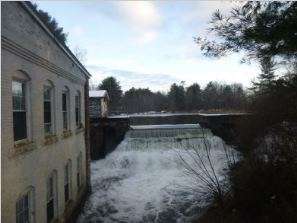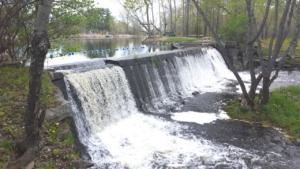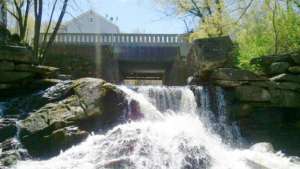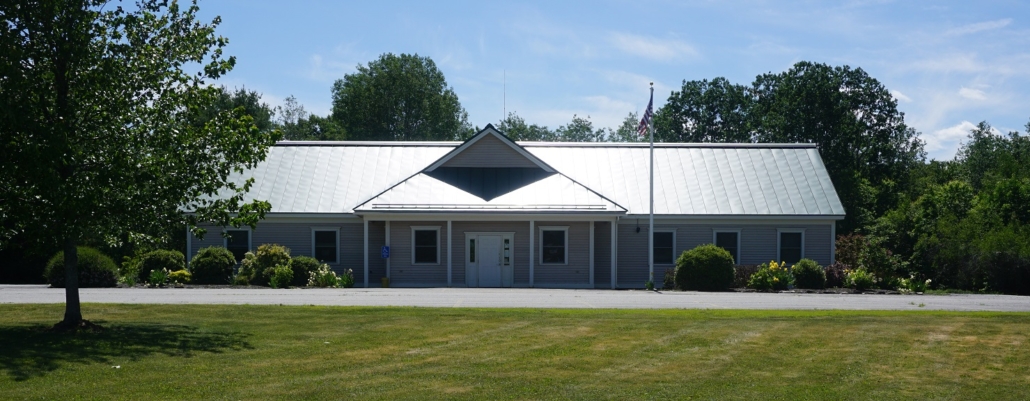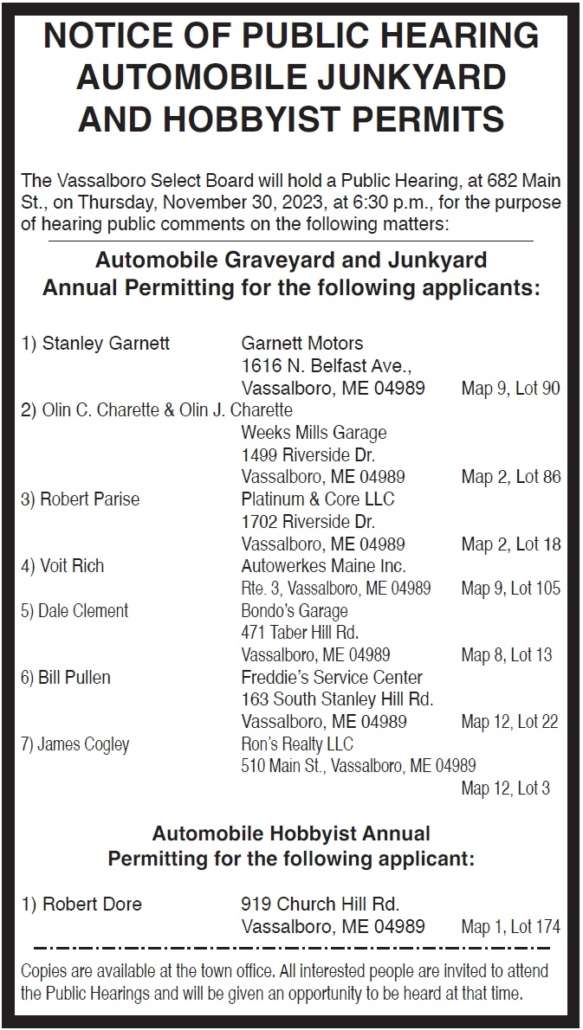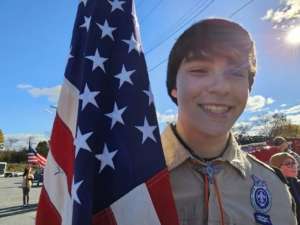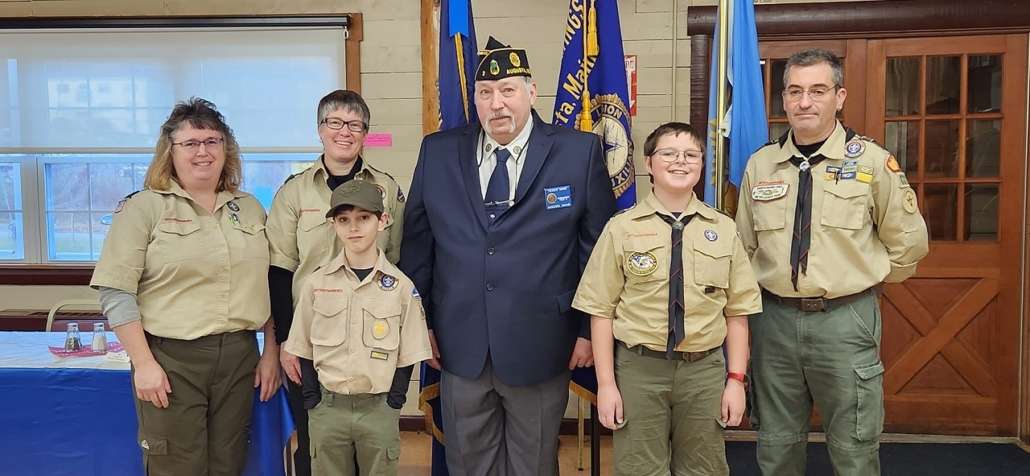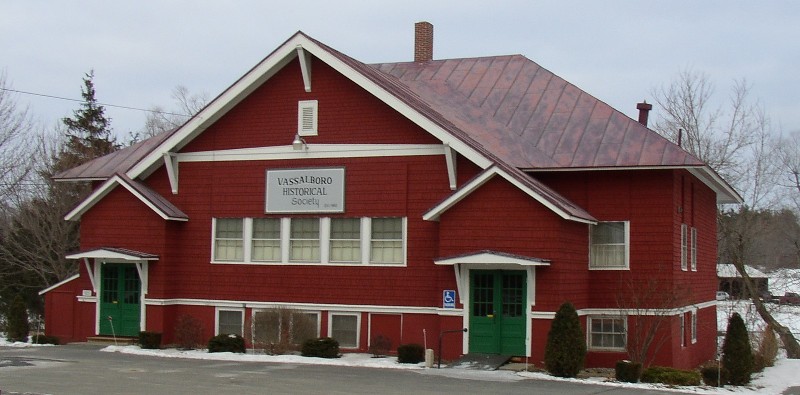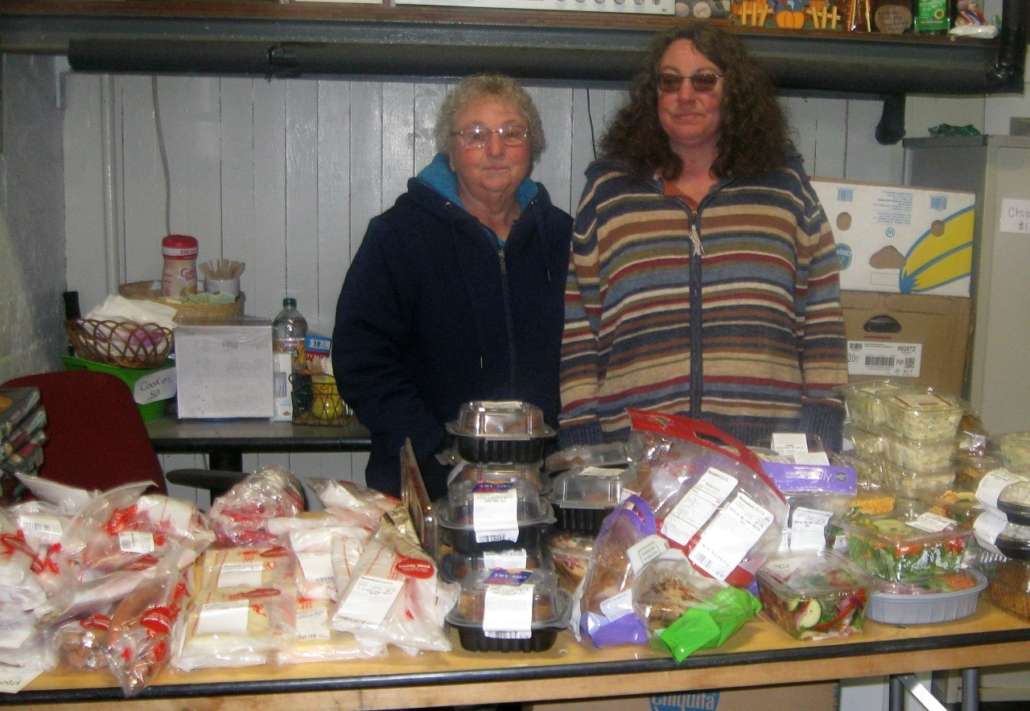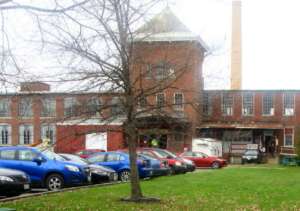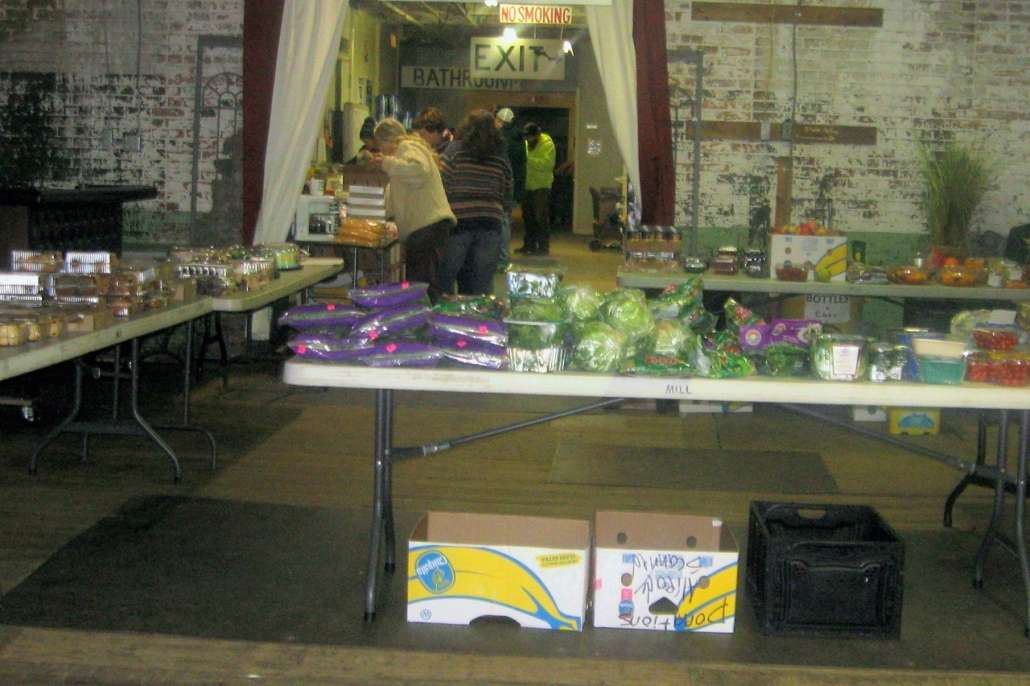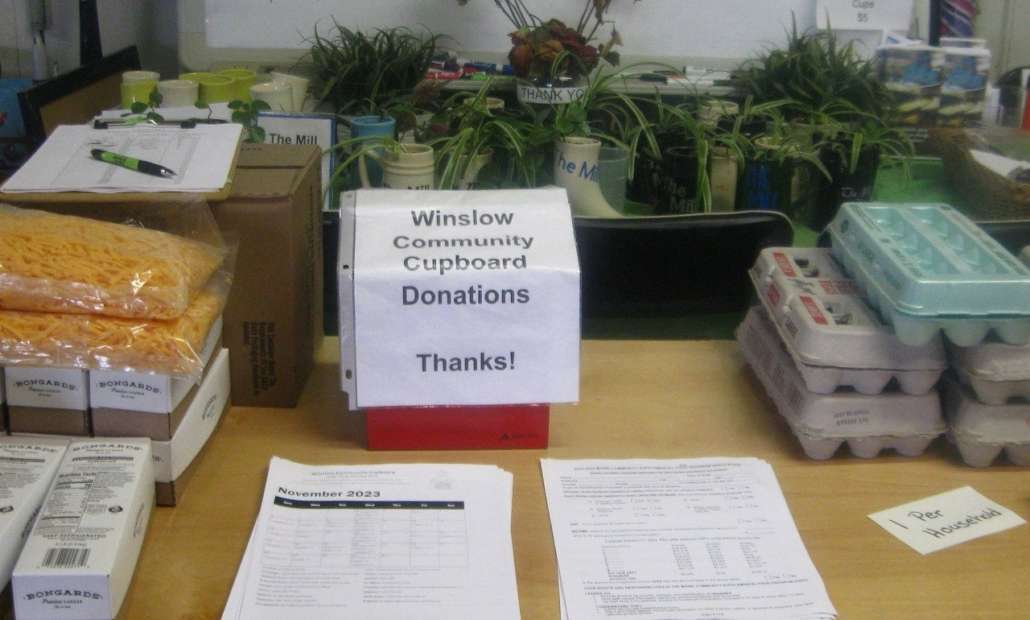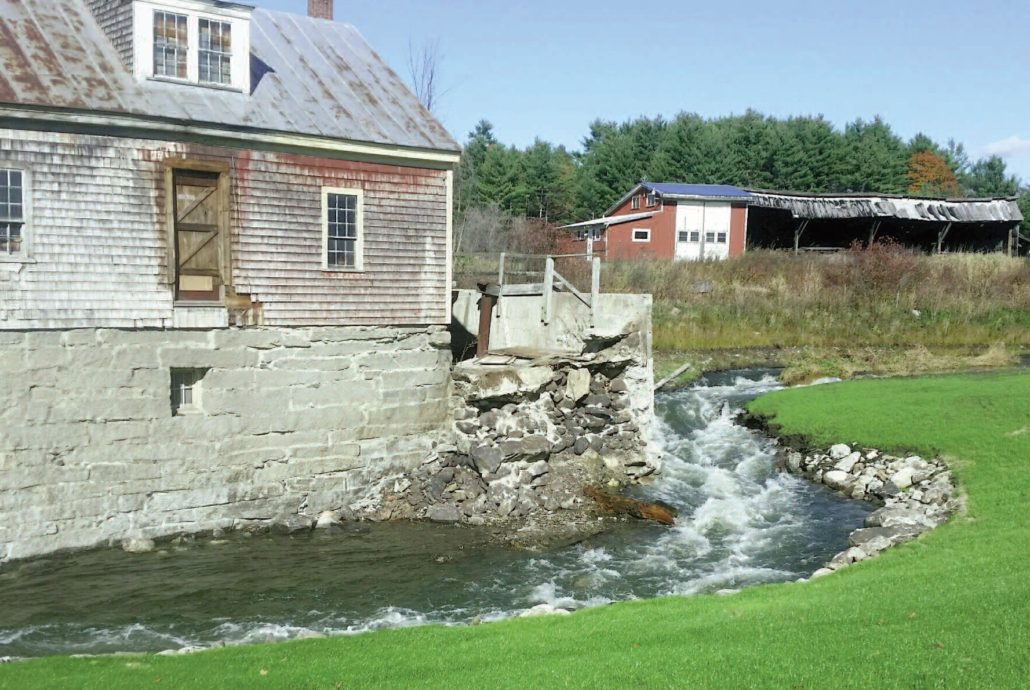
The Masse Sawmill site on Rte. 32, in East Vassalboro. (contributed photo)
When Louis Masse’s name appeared in last week’s article on the Starrett family of China, knowledgeable Vassalboro residents might have been surprised. They thought he was theirs, founder of the family that owned and ran the Masse mill on the Masse dam, in East Vassalboro.
Same man. First he lived and worked in China, building barns and houses and a water company; then he moved to East Vassalboro.
The Find a Grave website and a genealogy Vassalboro Historical Society president Jan Clowes shared both say Louis Zephirin Masse was born Feb. 18, 1876, in Becancour, Québec. The genealogy adds that his parents were born there, too, and he was baptized there on Feb. 20, 1876. Becancour is a town on the south bank of the St. Lawrence River, about halfway between Montreal and Québec City.
(The 1940 census says he was born in Maine. Masse most likely gave that information to the census-taker himself, in a face-to-face interview.)
In reply to an inquiry from Clowes, Stephen Robbins (Louis Masse’s great-grandson) shared and added to a high-school essay written by Masse’s granddaughter, Marion, in 1950. According to these two Masses, Louis, known as ‘Phirin, began working very young, cooking in a logging camp when he was 11 and taking jobs with neighboring farmers and maple sugar producers and in a cheese factory. One summer, he drove a neighbor’s cattle a mile to and from their pasture daily – “for two cents a week.”
Masse got some basic education as a child, Robbins wrote. It was in French, of course; when he moved to the United States, learning English was his first challenge.
Louis Masse followed his half-brothers south across the border when he was 16, Marion Masse said. He joined one half-brother in a mill in Vermont (probably in Newport, Vermont, on the Canadian border, Robbins added), and then another in Fairfield, Maine, where he worked in Totman’s and Nye’s mills.
After the mills burned (they burned several times; this reference is probably to the Aug. 21, 1895, fire described in the Fairfield bicentennial history), Marion Masse wrote that her grandfather went to a mill in Coopers Mills, in the town of Whitefield. By now, Robbins said he was calling himself Louis, not Zephirin.
Soon Van Renssalaer “Rance” Turner hired him to work on his farm on Turner Ridge, in Palermo, and encouraged him to get an education. When he was 19 or 20, Louis started school in Palermo, with much younger local children as classmates.
In the spring of 1897 he entered Erskine Academy, in South China, as a freshman. Within six months, he was in the senior class.
For part of his time at Erskine, Masse boarded with Samuel Starrett, thus meeting Samuel’s daughter, Edith Emily Starrett (niece of Laroy Sunderland Starrett; born Jan. 29, 1880, according to Robbins and Find a Grave, or Jan. 30, 1881, according to an on-line article). The China history describes her as “a lovely young lady of eighteen.”
Masse became a United States citizen on Dec. 31, 1897, and he and Edith were married July 16, 1898. Masse worked as a carpenter in China and Windsor, the China history says.
Robbins wrote that the Masses lived with Edith’s family for a while. In 1903, Louis built the first home for his family, on Windsor Road not far from the Starretts.
The 1940 census says Edith, like her husband, had four years of high school. An on-line article based on her diaries says she taught at Erskine before she met her husband, but gives no dates.
The Vassalboro Historical Society’s on-line collection has a photograph of a China cabinet, or hutch, Masse built. It has two sections, the bottom with vertically-paneled solid doors and the top with three shelves visible behind the glass doors.
The description says it is seven and a half feet tall, a little over four feet wide and 22 inches deep. On it, Masse wrote: “Married July 16, 1898, Made August 11, 1898.”
In 1905 Masse bought the sawmill (which dated from the early 1800s) on the West Branch of the Sheepscot River, in Weeks Mills. In 1907, according to Robbins, he built his family’s second home, in Weeks Mills village.
In September 1916, Masse organized what became the Weeks Mills Water Company, the only village water system in the Town of China.
Masse’s main goal, the China history says, was to improve fire protection (the village had had major fires in 1901 and 1904). He started “by pumping water from the river to about twenty subscribers, each of whom paid $50 to join the system and was responsible for digging from the central water main to his own house; there were also three hydrants in the village.”
The river water wasn’t satisfactory, so Masse “dug out and lined with cement a spring on the east side of the village,” whence water was pumped to a hilltop reservoir and flowed downhill to subscribers. A windmill was the first power source, succeeded by gasoline and then electric pumps.
When the China history was published in 1975, the company had “about fifteen customers, whose bills are based on the number of faucets in the house.”
Weeks Mills Water System is listed on the Maine state government’s Sept. 1, 2023, list of public water systems in China. It is described as a community system, with water coming from a 12-foot spring that produces 25 gallons per minute.
After the Masses moved to Vassalboro, the China history says, he continued area construction projects. Several sources credit him as head builder of China’s first consolidated elementary school. The five-classroom building on Lakeview Drive opened in early 1949 and is still part of China Middle School.
Masse bought an existing mill in East Vassalboro in 1912, according to Robbins (the on-line diary-based article says 1914), to expand his lumber business. Robbins wrote that he paid Warren Seaward $1,800 for it, and his family soon moved to the third house he built for them, on the west side of Route 32 across from the mill complex.
According to Henry Kingsbury’s Kennebec County history, the Masse mill was the second one on Outlet Stream in East Vassalboro village. There were two mill buildings, he wrote, a sawmill, still operating in 1892, and a grist mill with a stone bottom story.
Robbins dates this mill complex to 1797. He wrote that after buying the sawmill, Masse bought the grist mill across the stream, thus acquiring full “water rights and dam privileges.”
Robbins wrote that Masse “built a new dam” and replaced old-fashioned machinery. He started with eight men, Robbins said, paying them $10 a week apiece. In Weeks Mills, he worked alongside his crew when an extra hand was needed; whether he did the same in East Vassalboro, Robbins did not say.
Masse founded the East Vassalboro Water Company in 1914. Robbins wrote that it started with eight customers; installing lines to serve their houses took only four months. By 1950, the company served 55 houses.
An on-line source says in the 21st century, the company owns over 13 acres in three lots; its properties include springs and a 650-foot well.
Another source of information about Louis Masse is Alma Pierce Robbins’ 1971 history of Vassalboro’s first 200 years. One of the people she thanked in her introduction was “my grandnephew, the sixth generations of the Robbins family, Stephen Robbins.”
Alma Robbins traced the Robbins family history back through Stephen’s father, Gerald (see below), Maurice, Ira James and Heman, Jr., to Heman, Sr., the first Robbins in Vassalboro. An on-line genealogy says Heman Robbins Sr., was born in 1735 or 1736 in Harwich, Massachusetts, and died about 1817 in Vassalboro.
Alma Robbins’ first mention of Louis Masse in her Vassalboro history is in 1916, when he “installed hydrants and water mains at East Vassalboro.” In 1935, she said, he added seven more hydrants.
The on-line family history says the China Lake outlet dam was built in the 1930s. “Louis Z. directed the project and the W.P.A. [federal Works Progress Administration] provided six workmen.”
In 1940, the census-taker recorded that Masse was 64 years old, still working as a millwright, putting in 26 weeks in 1940. He shared a home in East Vassalboro with his wife, Edith S., aged 60.
Masse sold the water system in October 1943 to his son Herman, from whom it passed to his grandson, Kenneth Masse. Currently, Donald Robbins is listed on line as co-owner and designated operator, and the company is described as an investor-owned public water utility.
Stephen Robbins told your writer that Donald is his first cousin, son of his father’s brother Wallace.
Louis Masse died Nov. 14, 1959, in Waterville, and Edith died Sept. 17, 1960, also in Waterville. Both are buried in Chadwick Hill cemetery, on Windsor Road, in China.
Louis and Edith had three children Their son, Herman Charles, was born in China Oct. 29, 1904, according to an obituary found in on-line Masonic records. Herman Masse ran Masse Lumber Company in East Vassalboro from 1927 to 1969, and the East Vassalboro water system from 1950 to 1982. He died Feb. 2, 1990.
Louis and Edith’s younger daughter, Agnes Masse Plummer, died in 1989.
Their older daughter, Malvena Pearl Masse, was born July 8, 1899, in South China; graduated from Oak Grove Academy, Class of 1917; and died March 3, 1993, in Vassalboro. On Oct. 15, 1921, she married Maurice Smiley Robbins, who was born in Vassalboro Aug. 22, 1893, and died in Waterville Feb. 6, 1970.
Malvena and Maurice Robbins had three sons and a daughter between 1922 and 1932. Their second son, Gerald Laroy Robbins (Stephen Robbins’ father), was by your writer’s calculation, the great grand-nephew of inventor Laroy Sunderland Starrett, whose work was summarized in the Nov. 2 issue of The Town Line. (Stephen Robbins calls him “2nd-great-nephew”). Gerald’s grandmother was Starrett’s niece, Edith Emily (Starrett) Masse.
Gerald Laroy Robbins was born in Waterville Oct. 13, 1925. He interrupted his high schooling to join the Navy in 1944 and came home to earn a degree in mechanical engineering from the University of Maine at Orono in 1951.
After a brief stint in New York, Robbins came back to Maine and took a job with Keyes Fibre, in Waterville (the company founded by Martin Keyes, profiled in the Nov. 9 issue of The Town Line).
According to his obituary, he worked at Keyes for 34 years, until he retired in 1988. He died June 5, 2013. The obituary says, “While at Keyes Fibre, he developed a number of improvements for the company’s production machinery and products, and earned two U.S. patents for his designs.”
Main sources
Grow, Mary M. , China Maine Bicentennial History including 1984 revisions (1984).
Kingsbury, Henry D., ed., Illustrated History of Kennebec County Maine 1625-1892 (1892).
Robbins, Alma Pierce, History of Vassalborough Maine 1771 1971 n.d. (1971).
Robbins, Stephen correspondence.
Websites, miscellaneous.
CORRECTION: This article previously said the mill complex was dated to 1897. It should have said instead 1797. This has been corrected. We apologize for the error.
